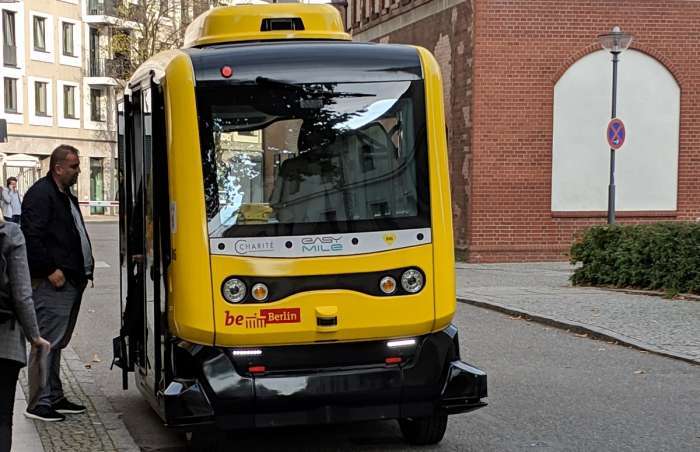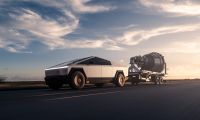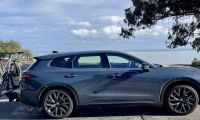Last month, Tesla announced that it will open a new factory outside Berlin, Germany. A lot was said about why Tesla needs another factory—technically it’s fifth, counting its solar-panel production facility in upstate New York. But little was said about why Berlin.
When Tesla CEO Elon Musk announced last week that the company’s first European factory will be located outside Berlin, in Germany, many analysts were surprised. They shouldn’t have been.
Germany is known for having some of the highest labor costs in the world, so many business analysts and consultants have expressed surprise at Musk’s choice. Uta Kremer, a professor of intercultural communications at Zwickau University in Germany told Business Insider, that when it comes to labor laws, “What happens in the U.S. isn’t automatically possible here.” She cited notice periods and having to work weekends as examples. Germany is known for having some of the highest unionized labor rates in the world.
From a broader perspective, though, the city is teeming with so-called “new mobility” options: shared electric bicycles and scooters, electric car-sharing fleets, and ride hailing apps. With a deep and broad pool of young, tech-savvy talent, the city has become home to hundreds of startup companies—something like the Silicon Valley of Germany—as opposed to southern Germany, which is more equivalent to the country’s Detroit.

Self-driving bus operating in Berlin
Musk reportedly even rode the train from the new site into Berlin to test out the commute for the kinds of software engineers his company is looking to hire.
Tesla has built its business and its reputation, however, from just such an environment - the even-more-expensive Silicon Valley. The company depends on the superiority of its software engineers for its easy-to-use in-car infotainment systems - with their famously large 17-inch touch screens - as well as its battery control software which even traditional auto industry analysts have conceded provides higher power with a more consistent range and better durability than other electric carmakers have so far managed.
Berlin is best known, not as a tech hub, but for its history as a divided city after World War II, and its example of resistance to Communist totalitarianism. That history could benefit Tesla with its new factory - to be called Gigafactory 4. While Berlin is booming, led by the tech and biotech sectors, the city is attracting startup companies from Silicon Valley, London, and elsewhere - including Silicon Valley - with lower rents. The cost of land and housing was artificially depressed in East Berlin through 1990 by the Communist command economy, and thereafter by underdeveloped infrastructure. In the West, the city struggled to attract businesses because its political future remained tenuous.

EVs charging in Berlin is a common scene
Only recently, 30 years after the fall of the Berlin Wall, has economic development in the East caught up with that in West Germany.
Economic leaders in the German state of Brandenburg, where the factory will be located, offered Tesla generous incentives to build there, and promised to expedite the building permits in four weeks, rather than the more typical 7 months.
Musk has said he plans to focus Tesla on self-driving cars and on its Tesla Network of autonomous taxis. In car-addicted America, that sounds farfetched. But in Berlin, where only 27 percent of residents own their own cars, and the populace is already used to buying tickets to ride on whatever transportation system is most affordable for their immediate needs, the people of Berlin—or, more accurately, the surrounding suburbs of Brandenberg—could be better prepared to build that transition than those in the U.S.
The List of Tesla Gigafactories:
- Gigafactory 1, Tesla's lithium-ion battery factory in Storey County, Nevada, U.S.
- Gigafactory 2, Tesla's photovoltaic cell factory in Buffalo, New York, U.S.
- Gigafactory 3, an under-construction Tesla factory in Shanghai, China
- Gigafactory 4, an announced battery, powertrain, and fully-assembled vehicle Tesla factory in Berlin, Germany
See you in my latest story discussing how the Ford Mach E's vertical touch screen points the way forward. Also, take a look at my latest story where I am making a conservative case for boosting the EV tax credit.
Eric Evarts has been bringing topical insight to readers on energy, the environment, technology, transportation, business, and consumer affairs for 25 years. He has spent most of that time in bustling newsrooms at The Christian Science Monitor and Consumer Reports, but his articles have appeared widely at outlets such as the journal Nature Outlook, Cars.com, US News & World Report, AAA, and TheWirecutter.com and Alternet. He can tell readers how to get the best deal and avoid buying a lemon, whether it’s a used car or a bad mortgage. Along the way, he has driven more than 1,500 new cars of all types, but the most interesting ones are those that promise to reduce national dependence on oil, and those that improve the environment. At least compared to some old jalopy they might replace. Please, follow Evarts on Twitter, Facebook and Linkedin. All of Eric's reports can be found on Torque News Tesla page. Check back again and search for Torque News Tesla news for more Tesla news coverage.












